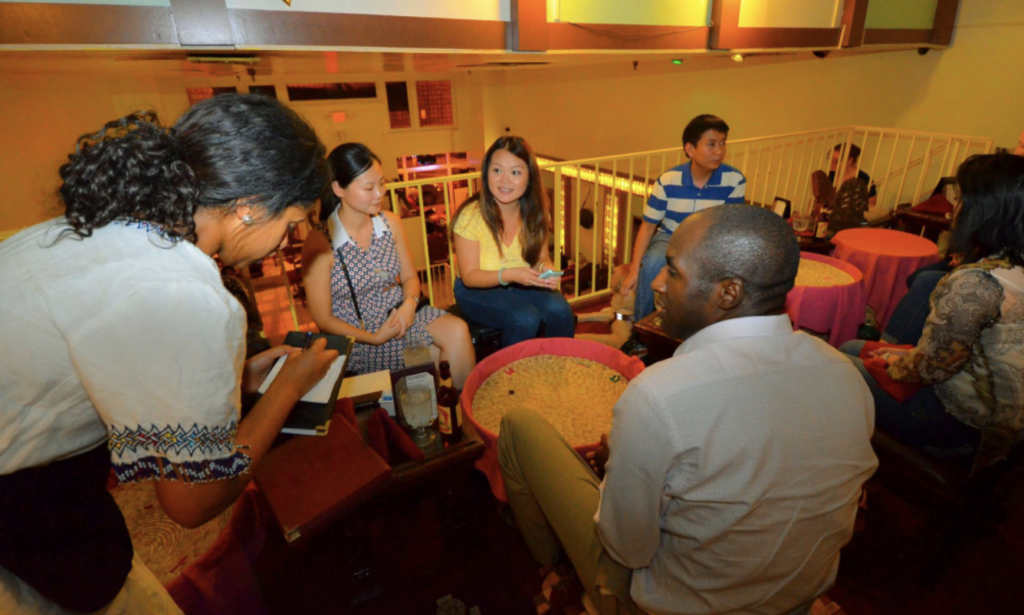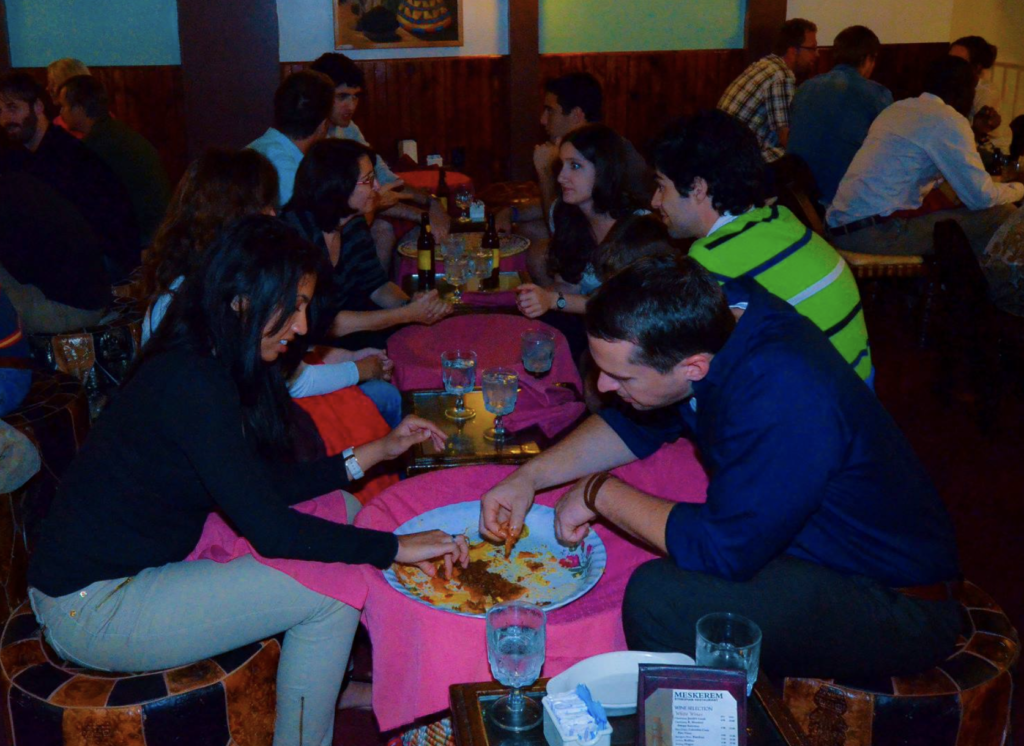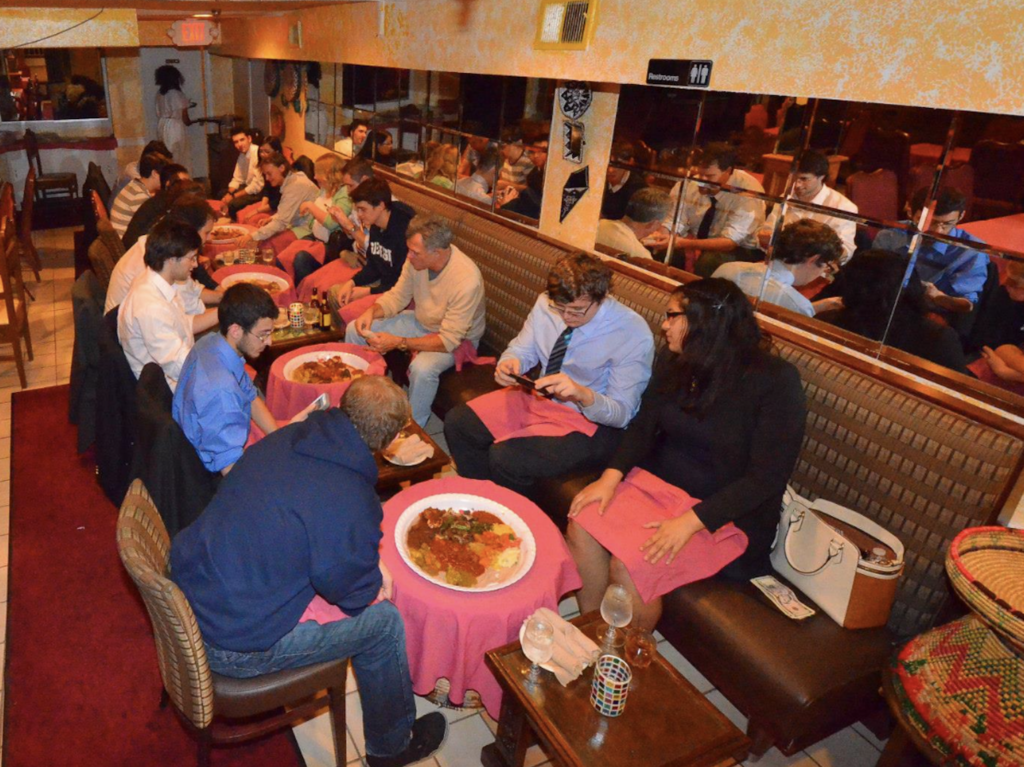September 2014 marked an important chapter in the history of Ethiopian restaurants and businesses in Washington, D.C. Meskerem, one of the pioneering Ethiopian eateries, opened its doors on March 15, 1985, during a time when there were only a few traces of Ethiopian culture in the city. The owners of Meskerem were among the early immigrants who had fled Ethiopia after a Marxist military junta overthrew Emperor Haile Selassie in 1974, triggering a civil war between Ethiopia and Eritrea that lasted until 2000.
Initially, Ethiopian and Eritrean refugees settled near the Adams Morgan neighborhood, which was known for its diverse community and vibrant dining scene. Adams Morgan, often referred to as AdMo, was named after two formerly segregated elementary schools and was a bustling area with a lively nightlife. However, rising rent prices pushed many Ethiopian entrepreneurs to seek properties on U and 9th Sts NW, which had been devastated by the 1968 riots following the assassination of Martin Luther King Jr.
The concentration of Ethiopian eateries on 9th St became so significant that community leaders advocated for renaming the block “Little Ethiopia.” However, this petition was overruled due to its proximity to the Howard Theater, an iconic venue known as “Black Broadway.” Despite this setback, Ethiopian restaurants continued to thrive and contribute to the cultural fabric of the Adams Morgan neighborhood.
Meskerem, in particular, played a crucial role in shaping the personality of Adams Morgan over the course of 30 years. The restaurant’s owners, Mohaba Mohammed and his sister Nafisa Said, persevered through various challenges, including the 2008 incident when Mohaba was shot in the neck. With remarkable resilience, they kept the restaurant running, even as others around them closed their doors.
One of the significant challenges faced by early Ethiopian restaurateurs was obtaining essential supplies. Initially, Mohammed struggled to find teff, the Ethiopian grain used to make injera, a staple bread. To overcome this obstacle, he resorted to using wheat flour and fermenting the dough for several days in plastic buckets. However, as time went on, the accessibility of supplies improved, with Ethiopian Airlines beginning to transport injera, teff, spices, and more to D.C. on a daily basis.
In September 2014, Jackie Woodbury organized an Ethiopian dinner at Meskerem, inviting a diverse group of diners, many of whom were unfamiliar with Ethiopian cuisine. The dinner featured a range of dishes, including the popular Meskerem Messob, a mixed special consisting of beef, chicken, lamb, veggies, and unlimited injera. The meal fostered a sense of community and shared experience, exemplifying the communal nature of Ethiopian cuisine.

So when Jackie invited me to join her for the Ethiopian dinner at Meskerem, I was delighted to attend. There was a fairly large group of diners who were mostly Ethiopian cuisine neophytes. We didn’t sit on elegant wooden chairs or eat from pristine table tops. We were seated instead on traditional cushioned low chairs next to knee-high round tables made out of basket weave.

Most of our group ordered the Meskerem Messob — mixed special which included beef, chicken, lamb, veggies and unlimited injera all for $13.50 per person. A few ordered the veggie-only version. The dishes were anything but boring. The healthy portions included ruby beets, lentils, salad, carrots, green beans, chickpeas and flavored with garlic, paprika and rosemary. The platter was fairly big and it was meant to be shared with others at your table.

Sharing with others meant teamwork, better conversation and synergy. We enjoyed our spicy palette of delicious curry-like stews accompanied by honey wine or St George, the national beer of Ethiopia.

The soft, stretchy, spongy flatbread doubled as an eating utensil and the hands still get plenty messy.
“Is this the messiest you’ve ever gotten eating with your hands?” I asked my friend Yoomie Huynh.

“Close, but not quite. The messiest I’ve ever gotten was at the Ben’s Chili Bowl half smoke eating contest during the H Street Festival. I didn’t win, but I ate everything in sight.”
Jackie enjoyed working with Mohaba and Nafisa in organizing the event.
“It brought lots of people from all different nationalities together to share a meal, a chat and a smile,” she said.
Despite the resilience and resourcefulness of Meskerem and other Ethiopian restaurants, the landscape began to change. Ethiopian eateries in Adams Morgan faced increasing challenges, and Meskerem itself closed less than a year after Woodbury’s dinner. Over time, many Ethiopian businesses either relocated to U Street or expanded to the suburbs of Maryland and Northern Virginia. As a result, the connection between the neighborhood and the first wave of Ethiopian immigrants, who had sought refuge and built their businesses there, appeared to be severed forever, as noted by Tim Carman, a food reporter at the Washington Post.
Nevertheless, the impact of Ethiopian entrepreneurs and their restaurants in Washington, D.C., remains significant. They contributed to the cultural diversity and vibrant culinary scene of the Adams Morgan neighborhood, leaving a lasting legacy that continues to be celebrated today.
